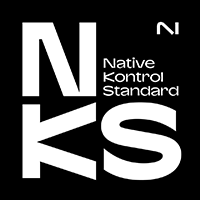Composers Edition
"..Brilliant and totally authentic, this is a tremendous resource for gamelan aficionados and a beautiful, colourful, complex set of sounds to enhance your creative soundtracks."

Sound On Sound Magazine, May 2008
If you didn't know already, the gamelan (pronounced with both 'a's sounding as in 'man') is the tuned percussion ensemble of Java and Bali. By a mad quirk of fate, its exotic tones have infiltrated UK music education and many schools now own a gamelan (usually the Javanese kind). Soniccouture located a rare and magnificent Balinese Semara Dana gamelan at LSO St Luke's in central London, sampled it extensively and spent four months programming the 5000 samples into a Kontakt library, enabling us all to experience its lovely sound.
As a big fan and ex-student of Balinese gamelan, I could be accused of bias towards this collection, but my playing experience also means I'd soon spot anything that didn't sound right. I'm happy to report that this gamelan sounds correct from top to bottom. Starting at the high end you have kantilan and pemade, metallophones with suspended bronze bars which are played with wooden hammers (often at break-neck speed) to produce brilliant, high-pitched, sustaining, bell-like notes.
The penetrating, clangy attack of the lower-pitched ugal contrasts with the calung, which is played with soft beaters to create a sweet singing tone. The jegog is the biggest keyed instrument (bloody heavy, too) and its gently booming bass notes delineate the main melody lines. Played by four players, a set of 14 tuned kettle gongs called reong have a more percussive sound and are traditionally used to perform syncopated and accented melodic rhythm patterns. Underpinning the ensemble are portentous-sounding giant, tuned gongs, a very nice pair of cylindrical kendang drums (which are played with hands and beaters) and crashy ceng ceng hand cymbals. I would have appreciated a greater variety of ceng hits, but the drums have no shortage of different strikes, which range from subtle flicks to powerful bashes.
Balinese gamelan instruments are built in pairs, with one instrument tuned slightly sharp of the other, and when the two are played in unison this gives the distinctive chorus-like 'shimmer' that is an integral part of the overall sound. In order to replicate this effect Soniccouture sampled the high-tuned and low-tuned version of each instrument separately, then combined them in optional 'pair' programs, where each key triggers a unison note with its authentic built-in vibration.
Muted notes (an important feature of Balinese gamelan pieces) are provided as well as sustains, and the large number of dynamic layers ensures that the timbral and dynamic response is very natural. The library faithfully adheres to the Semara Dana seven-tone pelog scale, but chromatic concert-pitch versions of the instruments are also available and can be quickly downloaded from Soniccouture's site. Accompanying this large (23GB) library is an excellent booklet containing detailed, well-written information and some great photos. The version I tried shipped in a limited-edition groovy metal tin, which can be used as an emergency percussion instrument in the event of a power cut. Brilliant and totally authentic, this is a tremendous resource for gamelan aficionados and a beautiful, colourful, complex set of sounds to enhance your creative soundtracks.
Dave Stewart, SOS, May 2008
"..the packaging? Stellar. The manual? A must-read. The samples? Indescribably perfect. The Kontakt instruments? Top notch. In short, this is a fantastic package. "
"..Let me state from the outset that this is a really nice package. Normally, when you get a multiple-hundreds-of-dollars sample set, the company producing it takes the whole "well, you're paying for the samples, not the box" concept to an extreme. Soniccouture have a bit of class, however, and this 3 DVD set ships in a metal box, as it should. With an incredibly nice manual that is actually worth reading. Go figure.
I had a lot of time to kill while copying the three (3!) DVDs to my hard drive, so I went through the manual, which is more or less a tutorial about what each instrument does, the range it is capable of playing, and what role it takes in a gamelan ensemble. The manual could be considered a mini-primer on the structure of gamelan music, and it even includes some simple charts.
Once the 22 (!) gigs of samples and such was copied, I opened Cubase, instanced Kontakt 3, and began to ding. About four hours later, my wife tapped me on the shoulder, wondering if I could please stop dinging. Once you get the feel for the layout of the various instruments (and I'll be the first to say it's odd in the beginning, because the instruments of the gamelan don't necessarily map to our equal-tempered scale with the greatest of ease), it is quite logical, and the Kontakt instruments and KSP scripts included are, in the usual soniccouture fashion, top-of-the-line. They are, in my opinion, the best thing going when it comes to utilizing the features of Kontakt to the maximum, and the gamelan set is no exception to their normal representation in this regard.
So, in summation, the packaging? Stellar. The manual? A must-read. The samples? Indescribably perfect. The Kontakt instruments? Top notch. In short, this is a fantastic package. Brutal honesty time, though: it is not cheap; you're not going to get something like this, with the time they spent on it, and the volume they can expect to sell it at, for a pittance, and that's a fact. This is a specialty item, for a specialty audience, and it has a specialty price. Now, that said, I've heard (and bought, natch) sample sets that cost far more that weren't even close to as good as this. This is the sort of thing that makes buying Kontakt worthwhile.
If you do soundtrack/scoring, or if you make ambient or "ethnic" music, you'll be incredibly well-served by this set, for certain."
Chris Randall, Analog Industries  Feb 2008

